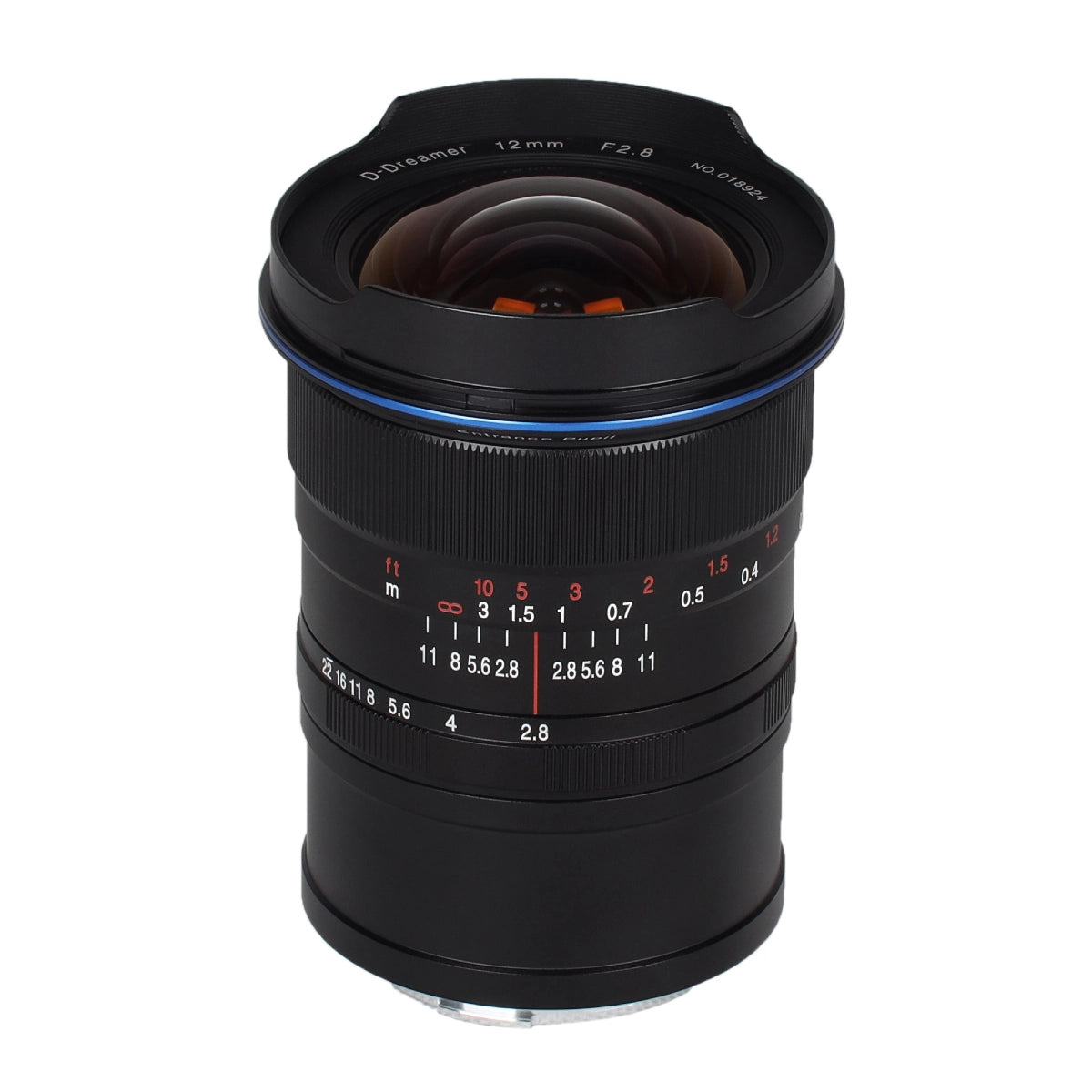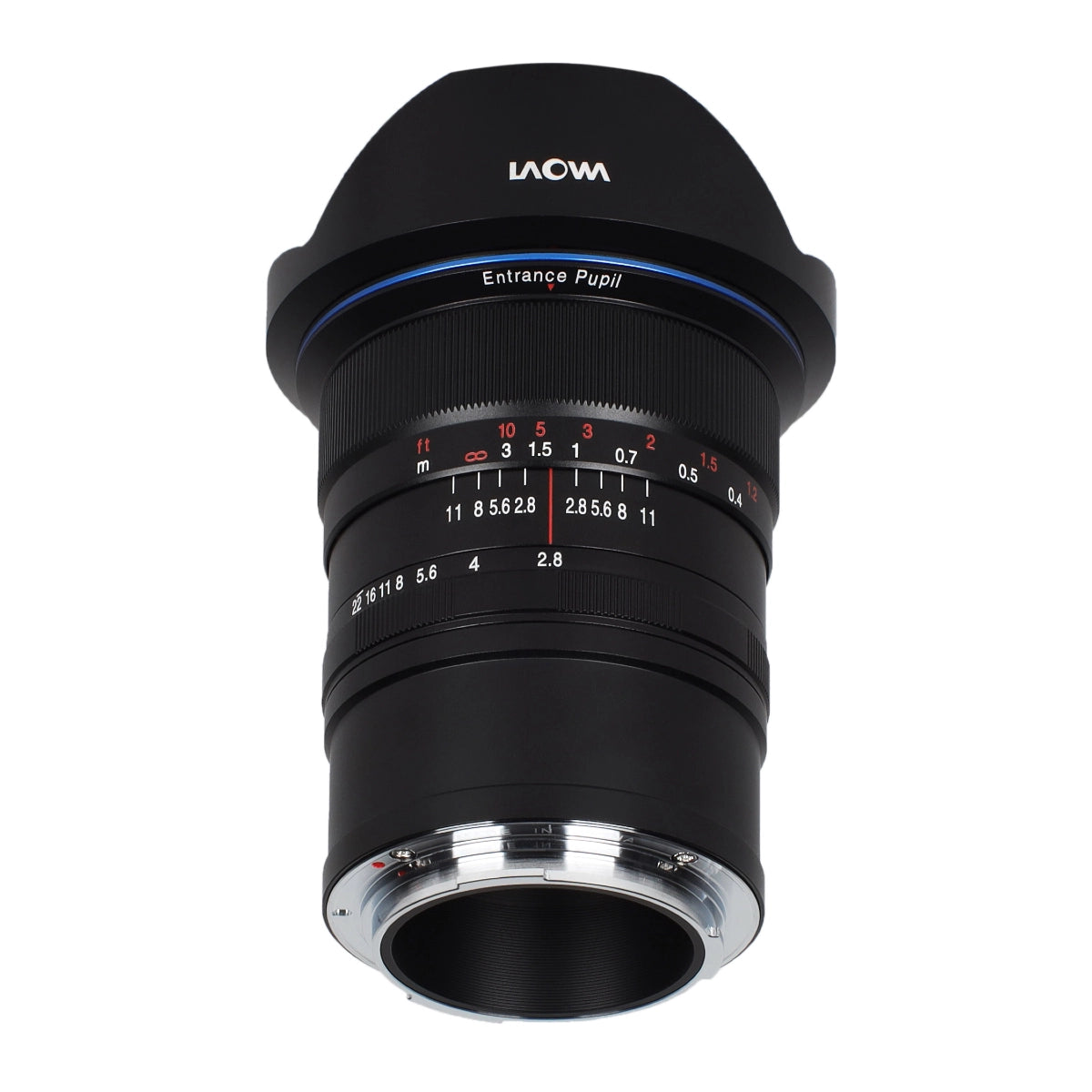Product Description
Laowa 12mm f/2.8 Zero-D Lens – Canon RF
Ultra-Wide, Distortion-Free Excellence for Full-Frame Canon RF
The Laowa 12mm f/2.8 Zero-D Lens – Canon RF is an ultra-wide-angle prime lens designed to deliver sharp, distortion-free images with exceptional clarity. Engineered for landscape, architectural, and interior photography, this rectilinear design ensures that straight lines remain straight, eliminating the barrel distortion commonly found in ultra-wide lenses.
With its bright f/2.8 aperture, this lens excels in low-light conditions, making it ideal for nightscapes and astrophotography. The manual focus design allows for precise control, while the floating optical system maintains superb sharpness from 7.09 inches to infinity.

Key Features & Benefits
-
Zero-D (Zero Distortion) Optical Design
The rectilinear optical construction ensures minimal distortion, making this lens a top choice for architecture, interiors, and landscape photography where straight lines must remain accurate. -
Ultra-Wide 12mm Perspective with Bright f/2.8 Aperture
The expansive 122° angle of view combined with the fast f/2.8 aperture delivers stunning, sharp results, even in low-light environments.

-
Advanced Optical Construction for Maximum Clarity
- Three extra-low dispersion elements reduce chromatic aberrations and colour fringing.
- Two aspherical elements enhance edge-to-edge sharpness and clarity.

-
Frog Eye Coating for Dust & Water Resistance
The Frog Eye Coating (FEC) on the front element repels dust, moisture, and smudges, making it ideal for harsh environments and outdoor shooting. -
Precise Manual Focus with Floating Optical Design
The manual focus system ensures precise control, while the floating optical design maintains sharpness and detail throughout the entire focus range, from 7.09 inches to infinity.

-
Built-In Petal-Shaped Lens Hood
Designed to reduce flare and ghosting, the integrated lens hood helps maintain optimal contrast and colour accuracy, even in strong lighting conditions.

A Must-Have Lens for Ultra-Wide Photography
The Laowa 12mm f/2.8 Zero-D Lens – Canon RF is a game-changing lens for photographers who demand distortion-free ultra-wide imaging. Whether you're capturing expansive landscapes, intricate architecture, or breathtaking nightscapes, this lens delivers exceptional optical performance with full creative control.
Experience true ultra-wide perfection with the Laowa 12mm f/2.8 Zero-D today!
| Focal Length | 12mm |
| Max. Aperture | f/2.8 |
| Angle of View | 121.96° |
| Format Compatibility | Full Frame |
| Lens Structure | 16 elements in 10 groups |
| Aperture Blades | 7 |
| Min. Focusing Distance | 18cm |
| Max. Magnification | 1:5 |
| Filter Thread | N/A |
| Dimensions | 75 x 83mm |
| Weight | 609g |
| Mounts | Canon EF & RF / Nikon AI & Z / Sony A / Pentax K / Sony E / L Mount |
Payment & Security
Your payment information is processed securely. We do not store credit card details nor have access to your credit card information.



















